|
Pilobolus, seen here in "The Ballad," returned to the area Sunday with two shows at the Spa Little Theater in Saratoga Springs. A half-century ago, Pilobolus turned its head on dance. The ensemble jacked up the art’s athleticism, swung into scenic illusion and created a tantalizing magic that still draws enthusiastic audiences – a major feat in the world of dance.
They were back at it on Sunday afternoon at the Spa Little Theater where the troupe of six spun beautiful yarns of nature, strength and humanity. Appearing in the renovated theater, which is still not ideal for dance as there are shallow wings and no curtain, the sextet managed to enchant as they always do — bending reality with a touch of humor. Entitled “re:Creation,” the afternoon blended old favorites like “Walklyndon” that got the children tittering, and the gorgeous duet “Symbiosis,” in which two literally elevate each other, with more recent works like “The Ballad,” that crystallized the culture and heartaches of Native Americans through the story of the creation and the windigo. For my tastes, it all came together in “Branches,” which sported a bit of Pilobolus wit and vigor while declaring our connections to each other and the natural world. The work begins with Zachary Weiss as a bird, snapping his head with bird-like ticks. The others arrive, in a wide stance, like leaping frogs, dipping their toes and then making a splash in an imaginary pool. They pair off for slow-moving duets in which the dancers blossom. Their floating arms and legs appear like unfurling pedals on a flower. All six merge into one this way in a rotating circle of symmetry, with some dancers upright and others upside-down. In the end, they are individuals again, tumbling about the boards in a roiling romp that looked both fun and blissfully alluring. The program opened with “Awaken Heart,” a seamless work for a quartet that brought to mind images of the beginning of time with the creation of the four elements – fire, earth, air and water — passionately and peacefully establishing their domains, while pairing off with their true partners. The ensemble also offered up another favorite, “Behind the Shadow,” where an illuminated screen offered skewed and surprising perspectives. All of these works adhere to the Pilobolus aesthetic of collaboration -- both in the studio and on the stage for the dancers who literally support each other throughout. The bonds that tie the Pilobolus artists together remain firm. Perhaps that is their secret continually delighting its audiences. We dance lovers are glad for it.
0 Comments
"Evidence of Labor: State of the Kitchen" takes a chaotic approach to the heart of the home. The kitchen is many things. For the sentimental, the kitchen prompts memories of warmth, nourishment, enticing aromas. The heart of the home.
But it also has a nexus for social and, ultimately, political power -- the woman’s domain, the arena for table talk and the portal to hand down heritage. Anyway you look at it, the kitchen provided much fodder for Michelle Ellsworth and Satchel Spencer's performance piece “Evidence of Labor: State of the Kitchen.” Their plywood kitchen, erected at EMPAC in Troy on Friday night, was a room of chaos where salt was generously sprinkled by climbing, crawling and cabinet-slamming performers. And despite much contemplation, it’s difficult to lift the veil of the work that combines movement, a rambling word salad and video. As I walked about this performance, I kept thinking it would combine into something hearty and healthy, for example, a recipe for life, but it never arrived. Perhaps that is the point. The program notes tells us the creators see kitchens as socially and technically complex. Maybe they are too hard to understand – like their hour-long work. Here’s a basic description that might help the reader understand what was happening. It opens with a man holding an alpine horn that is blasting. (He is not blowing into it.) He stands next to the wooden kitchen in which dancers, dressing in white jump suits, climb into ovens and cabinets to enter the central box. They come and go as Ellsworth repeats phrases like “great, oh good,” “are we ready,” “perfect” and “let’s have borders.” As part of her rambling, Ellsworth also talks about the inadequacy of language, couples therapy and coming out of the oven. Talking over her is a voice that stays “5 seconds, 3, 2, 1 start.” Meanwhile, the audience meanders around the set that also includes little video terminals where one can tune-out, with earphones, the kitchen and watch dancers skipping in bowling lanes, combing a fuzzy fringe hanging off a mantle or running with their arms spread wide in a grassy field. There are an endless array of dish towels too. Dancers ironed and hung them about the room. Each is painted with patterns, words and technical drawings. Each towel is own piece of art. The room also includes large traffic mirrors, allowing audiences to see another, distorted side of the construction, life-like video cameras made of wood and large screens on either side that show images from the interior kitchen box – some live – most pre-recorded. While baffled by the concept, “Evidence of Labor: State of the Kitchen” was ultimately thought-provoking. With so much to see and hear, the piece will keep me wondering for quite some time. Roderick George/kNoname Artist performed “The Missing Fruit” on Friday at Kaatsbaan Cultural Park. The show will be repeated on Saturday night inside the park's theater. What happens when a life is cut short? What happens to the fruits of their labor, the fruits of their creativity, the fruits of their love? No one knows because they will always be unrealized. But one thing is certain, lost potentials leave traces of pain in their wake.
And sadly, if those lives are Black, Indigenous or People of Color, most just doesn’t seem to care. That is the stark message from Roderick George/kNoname Artist’s “The Missing Fruit.” As seen on Friday night at Kaatsbaan Cultural Park’s outdoor Mountain Stage, the work is among a growing number of protest pieces of art that are demanding attention for their directness and honesty. In “The Missing Fruit,” kNonameArtist presents a shooting death of a young BIPCO person, and then questions who, except the devastated family and those around them, is troubled. Set to electronic music by slowdanger as performed by pvkvsv, the work feels like both a treacherous day-in-the-life and a life sentence. Still, it is instantly clear that this ensemble is extraordinary. The eight are technically beautiful for their fluidity and luscious, balletic movement that ripples through to the tips of the fingers. But the audience quickly sees that their beauty is overshadowed by agony. George shows that in a contorted, standout solo that references “Strange Fruit,” an anti-lynching song that speaks of “blood on leaves” with a voiceover saying that everything disappears in Black. The work shifts to one in which the dancers unite. As they coalesce as one, their hand gestures grow prominent. With palms extended, they shield their face, raise their arms in surrender or seek the mercy of a god and then they lower them to beg forgiveness or an act of kindness. Their hands and arms also block their view, as the peek cautiously into an unwelcoming world. As dancers disassemble, they pair off and hold each other up in, based on the music, an ominous landscape. Then the audience collectively jumps with the crack of a gun and a man falling dead. At this point, kNoname Artist seems to have had some technical difficulties. Pvkvsv, positioned upstage in the corner, leaves his computer and the place goes silent. As the “dead” body lays still, alone, all that can be heard are crickets, which inadvertently, says a lot. After what seemed like an eternity, pvkvsv returned and so did the sound. The dance moves onto the suffering of losing a promising loved one to violence. It was a plea for the world at large to care. With states banning the teaching of histories of BIPOC people, “The Missing Fruit” is indeed timely. But as Bob Dylan asked in his song "Blowin' In the Wind," “How many times can a man turn his head/And pretend that he just doesn't see?” Apparently, the answer is an infinite number of times. Roderick George/kNonameArtist is bravely shouting to change that. It's beyond art, it's a calling. "The Missing Fruit" will be repeated at 6 p.m. tonight, Sept. 23, in the park's indoor theater. Tickets can be purchased here. Wanjiru Kamuyu performed the powerful "An Immigrant's Story" on Saturday at PS/21 in Chatham. The immigrant story is complicated. Each immigrant has a unique one that few in the new home country want to hear; so they walk among their new country folks in fear. They are “the other” and they remain as such until they can blend. And before they do, they must be wary.
That’s the message behind Wanjiru Kamuyu’s “An Immigrant’s Story,” a powerful solo performed by Wanjiru Kamuyu on Saturday at PS/21 in Chatham. In an evening-length work, this dancer, singer and storyteller from Kenya and France explores the careful tight-rope immigrants tread – one where they inhabit land that many don’t want them to live. It's an important, timely topic that Kamuyu breaches. And I'm glad she is doing it as Kamuyu is an engaging artist who, in this work, grabs her audience’s attention immediately with her voice that shot through the darkness with a longing for a home that is lost. When the lights on the stage rise to just a thin line in which she stands, one sees a person who struggles. She tears at her heart, looking strangled. She holds out her hands, begging for acceptance. She is trapped with little room to maneuver. As she runs, her colorful, African-pattern top, becomes tattered. So too do her pants. And when her costumes, designed by Brigit Neppl, transforms into a ripped robe of faded material, one sees the pain of being stripped of more than a home. Familiar landscapes, friendships, language, acceptance are lost. The stage design is stark. It is rimmed with overturned chairs – basically signaling that one is not welcome. You cannot sit and stay in an upside-down chair. The lighting, by Cyril Mulon, is also telling. It switches to boxes – as if an immigrant is boxed into a persona. She stands in one to tell the story of an African teen coming to America – and the racism she met. That marginalization did not emanate from White people but Blacks who called her names like Jungle Bunny and taunted her by saying she lived like Tarzan, topless with her bottom hanging out. They even, shockingly, said the transatlantic slave trade kept them from that – a shocking notion for any person of color to contemplate. At one point, Kamuyu walks off the stage and glides slowly through an aisle of patrons, making discomfort part of the experience. Members of the audience she slips by stand, lean back, shift in the closeness to this stranger. Her pass through in the house, with her head held high and eyes searching, is overlaid with her voice that speaks of the privilege of sitting up front with others of your same race, perhaps same ethnic background. She spoke about how those in the back are not even worthy of consideration. Those in the front row are who matter. It was a strong indictment on all of us there, mainly because it’s true. When she returned to the stage, she spoke of immigrant stories – those of all people -- as created by Laetitia Ajanohun. The last was of a Russian living in Sweden. Though that person made a life in Sweden, they balk at talking about their roots, but whimsically admit they yearn to sit by a river near their old home. It was heartbreaking. What those who vilify immigrants miss is the immigrants might not want to be here or another country either. And at a time when immigrants are unfairly targeted, Kamuyu wants people to know that. I hope more people listen. Elisabeth Tonev, with partner Victor Caixeta performed in Victor Gsovsky’s “Grand Pas Classique." (Photo by Christopher Duggan) The 62-year-old Dutch National Ballet has finally made it to America’s mecca for dance – Jacob’s Pillow. And deservedly so.
Watching this handsome, versatile company performing works by the father of Dutch dance, Hans van Manen, I couldn’t help but wonder why haven’t I seen them before. They are a beautiful diverse group of dancers who are charming and able to sing in a stone-cold classical pas de deux as well as contemporary works with ease. They even pinned down William Forsythe’s technically taxing “The Vertiginous Thrill of Exactitude” with ease while shattering hearts in a duet by Wubkje Kuindersma. Needless to say, I was impressed. It was also wonderful to see more of van Manen’s work, which also made up much of the founding repertoire of the equally wonderful Nederlands Dans Theater. The evening opened with van Manen’s “Variations for Two Couples,” a work in which two pairs take turns in a gliding, seamless mediation. To music by Benjamin Britten, Einojuhani Rautavaara, Stevan Kovacs Tickmayer and Astor Piazzolla, it served as a lovely warm-up, but is practical forgettable when compared to the rest of the program. I preferred the last-minute addition to the program, van Manen’s tour-de-force “Solo,” which is actually a trio for three men dancing as soloists. The dance, to Bach’s Violin Suite, is chockful of little touches – like head wobbles, finger points and arm gestures all done while endlessly jumping and turning at top speeds. The dynamic Davi Ramos caught the eye with his striking flow that was exquisitely cutting. The Dutch, like all good ballet companies, ensured its place as a respectable with Victor Gsovsky’s “Grand Pas Classique” from 1949. Elisabeth Tonev, with partner Victor Caixeta, amazed with her pointe work that was rock steady, precise and carefree. Forsythe’s “Vertiginous Thrill” simply furthered the respect for this company. Kuindersma’s “Two and Only,” with songs by Michael Benjamin, also drew in viewers with a tender, but painful expression of a splintered love. Timothy van Poucke and James Stout were divine in this punishing farewell. The evening closed with van Manen’s dashing “5 Tangos” to more music by Piazzolla. The choreography is what won the moment here – the solo for Young Gyu Choi gushed with power while female soloist Qiam Liu challenged the macho potency of the ensemble of men. All in all, it was a fine program that any dance lover would find something to love. Dutch National Ballet will dance at Pillow through Sunday. Dallas McMurray leads "Message to Michael" in Mark Morris Dance Group's "The Look of Love," a love letter to Burt Bacharach. (Photo by Christopher Duggan) Burt Bacharach fans must make their way to Jacob’s Pillow this week for the Mark Morris Dance Group’s colorful and quite literal tribute to the composer's songbook.
I don’t think it’s Morris’ best work, but “The Look of Love” elevates Bacharach's wonderful music in a love letter to the pop composer whose prolific skills defined love songs for a generation of Americans. Moreover, it unleashes Morris's playful side. This most musical of choreographers stands fully in not just the song's rhythms, as one would expect, but also in its lyrics, mirroring every word. The piece features 14 songs including the title song along with “Always Something There to Remind You,” “Raindrops Keep Falling on My Head” and “I Say a Little Prayer” as sung soulfully live by Marcy Harriel who was accompanied by backup vocals, piano, trumpet, bass and drums. Watching the dance for 10 sends one back to the late 1960s. It starts with a quiet piano rendering of “Alfie” before the curtain opens to five folding chairs that reflected the flamboyant colors of the costumes – yellow, orange and pink, with splashes of purple, red and green. The chairs, with matching, movable cushions, become part of this swirling cauldron in which dancers animate the songs by miming falling tears, breaking hearts, prayerful pleads and pouring rain. The dancers begin with a circle dance to “What the World Needs Now,” an anthem and antidote to societal troubles. With the dancers holding hands and rotating as one inside the circle of chairs, there is a sense that all could be well. Each song was a jewel that Morris dancers honored. “Message to Michael,” led by Dallas McMurray as a priest like figure, sent a prayer to a beloved faraway friend. “Do You Know the Way to San Jose” bustled like a city street and “Walk on By” criss-crossed with dancers walking – simply walking – in a beautiful kaleidoscope of intersecting lines. The surprise was the music from movie “The Blob.” With dancers in silhouette their shadows stalked to the edge of the stage with clawed hands – one to reveal – when the lights came up that the fear was imaginary. The title song wrought the most emotion with a couple, Karlie Budge and Noah Vinson, in a push-pull to surrender to their tender feelings that ending in a loving embrace. This is a dance for the masses that celebrates the songs and doesn’t force one to overthink what’s happening on the stage. There is no need to ponder, just enjoy and hum along. Jessica Ferretti and ensemble in Paul Taylor's "Piazzolla Caldera," which was performed at PS21 Chatham on Friday night. (Photo by Ron Thiele) Paul Taylor Dance Company is a national treasure. And for the past few years, PS21 Chatham has been lucky enough to share in its riches, creating a bond between audiences and dancers that has galvanized some of the company’s most inspired shows.
Friday night’s was no exception. Obviously, the dancers are at home on this stage in a dormant apple orchard in Columbia County. The mutual affection stimulates a go-for-it attitude and everyone on both sides of the theater benefits. The evening opened with Taylor’s rollicking “Mercuric Tidings,” where every move at the top of Franz Schubert’s symphony excerpts felt like a “ta-da.” The dancers streamed across the stage in a wave, first tightly with their arms and legs shooting and rolling over heads as they swiftly angled forward. Then they tilted apart, galloping in circles, strutting and leaping in lines across the stage as their arms wheel them around in a tumbling, tossing gambol. Like so many of Taylor’s pieces, there were tidbits to savor. The tiny hops to the side, the straight up sautes and the clasp of the air as if the dancers are embracing a beach ball. In the end, they reassembled into a tight tableau, one body exhausted but satisfied with this ambrosia feast. “Mercuric Tidings” also underscored Taylor’s musical sensibility. He, like ballet’s George Balanchine, rode the music, helping the audience see and thus appreciate it. And his musical sensibilities extended to all genres – from classical to pop and everything in between. His “Piazzolla Caldera” was another fine example of his ability to not only ride but savor music. Set to Astor Piazzolla’s accordion laced tango music, one could feel the sexual heat. It radiated off the dancers in the opening sequence – faced on opposite ends of the stage, the men suggestively thrusted out their hips while the women whirled their legs around or circled their heeled feet on the floor as if drawing a imaginary line they were daring them to cross. Out in front of the men was Lee Duveneck, a commanding dancer who dared the viewer not to watch. Also compelling was Alex Clayton and John Harnage in the drunken duet of dominance; as was Jessica Ferretti who danced the lone, rejected woman who flopped to the floor at the end. The evening was completed with Taylor’s ode to the hippies in “A Field of Grass,” at first happily rolling around in a marijuana haze that turns to a shuttering addiction. Of course, like all Taylor pieces, there was a blissful, skipping finale with Harry Nilsson’s “The Puppy Song.” The summer has just begun, however, and there is much more dance to come at PS21 Chatham including the Edinburgh Fringe Festival hit "Cirk La Putyka" and Italian choreographer Alessandro Sciarroni’s “Save the Last Dance For Me. New Jersey Ballet performs Harrison Ball's "Purcell Suite" on Sunday at Kaatsbaan Cultural Park. What’s missing when a group of people are oppressed? The answer is unknowable. But what is certain is something has gone missing. Something is lost.
That’s what choreographer Roderick George, or kNonAme Artist, was driving at in his “The Missing Fruit,” a work presented by his contemporary ensemble on Sunday afternoon at Kaatsbaan Cultural Park’s spring festival. The forceful piece with intriguing vocal and electronic music by the duet Slowdanger, played live onstage, reflects how, despite one’s effort to rise, there is always someone to push one back down – especially if that one is Black, Indigenous or a Person of Color. The dancers began their journey with a slow walk, like a sleepwalker, and then fell to the floor -- dormant but active. As a few stood, they were met with a figure in a white skirt who challenged them. He swung his legs over their ducking heads and assertively lorded over them with his wide stand and hands on his hips. Despite their pushback, he stood firm. Between moments of aggression, the dancers walked with tiny step, as if to tip toe silently into the rightful place in life. George’s told this story with quiet explosions that turned combative – mixing ballet, marital arts with African rhythms that included swinging lifts that whirl dancers around their partners shoulders. While there was no resolution to the problem George posed, aside from mass exodus, the work definitely piqued my interest in his work. I hope a longer program of his pieces will return to the region. He’s an artist with a message, an artist for our time. I’m also interested in watching the evolution of New Jersey Ballet, which was also part of Sunday’s program. Under the director of former New York City Ballet superstar Maria Kowroski, the company will likely grow in both artistry and stature. As artistic director, Kowroski already brought in newly retired City Ballet colleague Harrison Ball. He created “Purcell Suite” from music from Purcell’s heart-breaking opera “Dido and Aeneas,” the company’s offering to the program. At first, I thought the piece, danced in slippers, not pointe shoes, was a darker version of George Balanchine’s “Serenade” as similarities were obvious. For example, Ball designed loads of port de bras and swells of 12 female dancers who assembled and dispersed, with the simplicity and beauty of Balanchine's first American ballet. The work was pleasant and the dancers seemly lovely. But I'm sure Kowroski will elevate everything about this now minor ballet company. Finally, the afternoon featured a duet from Trisha Brown Dance Company. “Rogues,” with music to Alvin Curran, was classic Brown – an accumulation of pedestrian movement that hit with a weighty, fluid swing. As danced by Patrick Needham and Jennifer Payan, the piece exuded a purposeful laborer’s feel – physical work done with craftsmanship precision. “Rogues” showed off both choreographer and dancer's skills. While this was a satisfying program, Kaatsbaan remains a challenging venue. Last week, the audience got soaked with rain. This week, they were semi-blinded by the sun. So if you go, wear a hat and sunglasses. Gemma Bond's "The Go Between" was danced by Kyra Coco and Finnian Carmeci at Kaatsbaan Cultural Park. (Photo by Rosalie O'Connor) wI’m a dance critic. I review dance, not the venues they are presented in.
But I can’t contemplate the marvelous Limon Dance Company who performed a challenging program with American Ballet Theatre Studio Company on Saturday night, until I put down my distressing thoughts on Kaatsbaan Cultural Park. The venue, a decades-old incubator devoted to dance, has changed. It’s changed a lot. And not for the better. Sometime during the early months of 2020, its co-founders, Greg Cary and his late husband Bentley Roton, who made the then Kaatbaan International Dance Center, their lives’ work, were ousted by the board. The reason is unclear. But since then, not only has the name of the venue changed but so too in how it presents dance -- outside only – a baffling move as Cary and Roton built an intimate 160-seat, well-equipped black-box theater. Being outside was a problem on Saturday night as the Hudson Valley temperatures hovered in the low 60s and upper 50s. And it was raining. It was no night to sit outside in an open meadow. It was no night for dancers to be performing on an open-air stage. Now a lot of venues are outdoors, which is usually lovely in the summer months. Think Saratoga Performing Arts Center and Jacob’s Pillow. In Saratoga, the show can go on in the rain and patrons who bought lawn tickets to dance and classical music performances are often invited inside the amphitheater. At Jacob’s Pillow, they cancel shows when it rains on their outdoor stage. Then there are places like PS/21 in Chatham. For years, dancers performed under a tent, similar to the one now at Kaatsbaan. But patrons were also under the tent, which help stopped some of the rain from inundating the stage. Moreover, at both Jacob’s Pillow and PS/21, seats are provided. Not at Kaatsbaan. Audiences must bring their own chairs or blankets, which they must haul about a half mile to the stage. There are golf carts that can give ticket holders, many who are seniors, a bumpy ride down to the stage located in one of the meadows within its 153-acre complex. Once there, ticket holders can’t just plop down their chairs. They are divided into premium payers, $65 on Saturday night, or $45 general admission patrons who sit farther back. The only amenities for the audience are sales of Millbrook wine, snacks and Kaatsbaan swag. That’s fine, but they could consider some comforts. For example, PS/21 always supplied its patrons blankets on chilly nights. In the fine weather, I’m sure it is grand. But on Saturday night, it was miserable for all. There was a delay to the start to towel down the stage. Once the dancers finally took to the boards, there was another delay after a rained heavily during George Balanchine’s “Tchaikovsky Pas de Deux.” Audiences scrambled as the dancers kept going in this technically taxing ballet, to their own detriment as it’s dangerous to dance on a wet stage. The program also had to be cut because darkness was approaching and there is no lighting to guide audiences along the paths back to the parking lot. This is all a shame as both the Limon Dance and the ABT Studio Company, a feeder to the main American Ballet Theatre, are wonderful. For example, the versatile Savannah Spratt was commanding in company Artistic Director Jose Limon’s “Chaconne” to Bach and delicate and vulnerable as the Moor’s wife in his “The Moor’s Pavane,” the night’s highlight. Based on Shakespeare's "Othello," the dance, to music by Henry Purcell, centers on the deception and betrayal that ends in death. Eric Parra as the Moor and Joey Columbus as his conniving friend oozed a toxic intensity that cut through the surrounding misty air. The cold air was fitting. The Studio Company’s highlight was a divine rendering of Kenneth McMillian’s gentle “Concerto” pas de deux with dancers Kyra Coco and Finnian Carmeci. Unlike many young dancers who are concerned about getting the steps right, they emoted a connection underneath the slow, simmering dance to Shostakovich that was beautiful. They deserve better and so do Kaatsbaan audiences. New York City Ballet principal Sara Mearns danced the bewitched swan in George Balanchine's "Swan Lake" on Sunday afternoon. Only the greatest classicist can seize a master work and refashioned it into something that honors its gravatis and preciousness while successfully preserving it core. It requires a deep knowledge of every aspect of work to reassemble it parts, strip away its sluff and leave only its essence for savoring.
That's what the late George Balanchine, one of the 20th century most important ballet choreographers, did with Tchaikovsky's "Swan Lake." In his hands, the three act ballet has been condensed, some might say crammed as it feels so fleeting, into a 35-minute ballet. He stripped away carousing courtiers, a marriage-minded mother, a pack of princesses and the deceptive other woman. What is left is an unrequited love-story -- a prince who falls desperately in love with an enchanted swan whom he can never fully embrace. On Sunday at Lincoln Center, New York City Ballet presented his version, which also included a bevy of black swan, rather than the typical white ones. Balanchine gave them plenty to do, including borrowing music from the third act's waltz and pas de neuf and bestowing it the swans, led by the commanding Megan LeCrone and Emma von Enck, who soared through it all. The company adagio master, Sara Mearns, portrayed the swan queen with tenderness, extending every note of the music through each finger tips. She caressed the arm of her her beloved prince Tyler Angle who encircled her again and again. It made one believe in this improbable love. Mearns did appears to struggle a bit on some of the speedier pointe work, but still, she was perfect for the romantic role -- gorgeous, generous and sparkling. She left the audience aching for more. Still, I wish Balanchine didn't toy with the classic. The haunting musical theme elicits goose bumps and the melodies are brilliant, ranging from playful to sinister. And it made me long to see more. Still, if anyone was to mettle with a classic, it could only be Balanchine, the choreographic craftsman with a cleared-eye vision and plan to execute it. "Swan Lake" was preceded by Alexei Ratmansky's "Pictures at an Exhibition," a work in which 10 dancers become as much of an art exhibition as the Wassily Kandinsky paintings that made up its backdrop. The 2014 ballet to music by Modest Mussorgsky is one that is clever in its structure, but also nerve-wracking as some of the lifts appeared dangerous. At times, I thought some women would be dropped on their heads as a few sections looked a tad underrehearsed. Regardless, Andrew Veyette was most enjoyable. He was fierce, attacking the movement as if he planned on crushing it -- and indeed he did -- keeping all eyes trained on him. He was a standout among the men in "Promenade." Pianist Susan Walters accompanied them. She was perfection, as always. |
Wendy
|
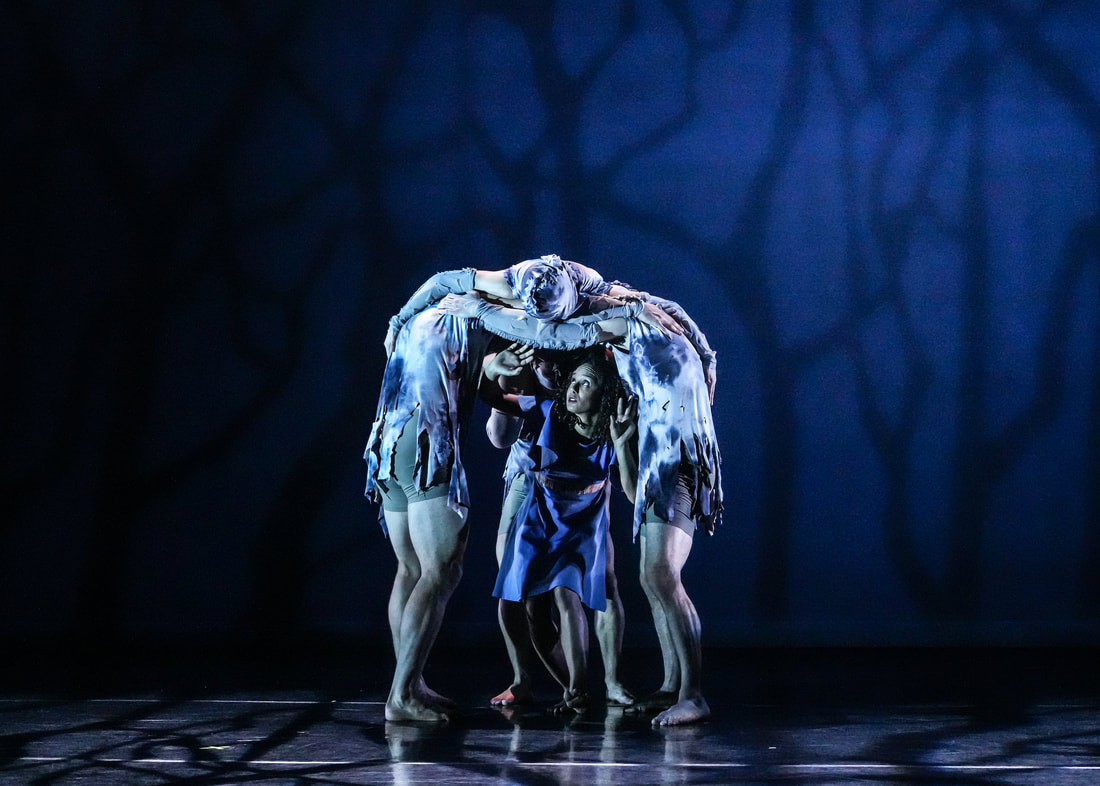
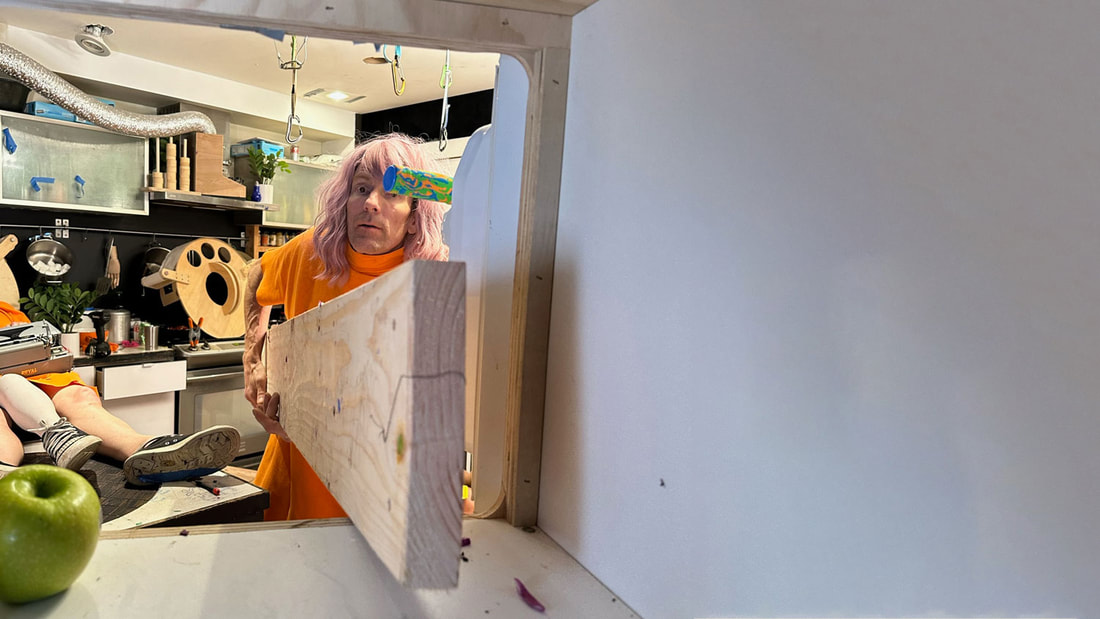
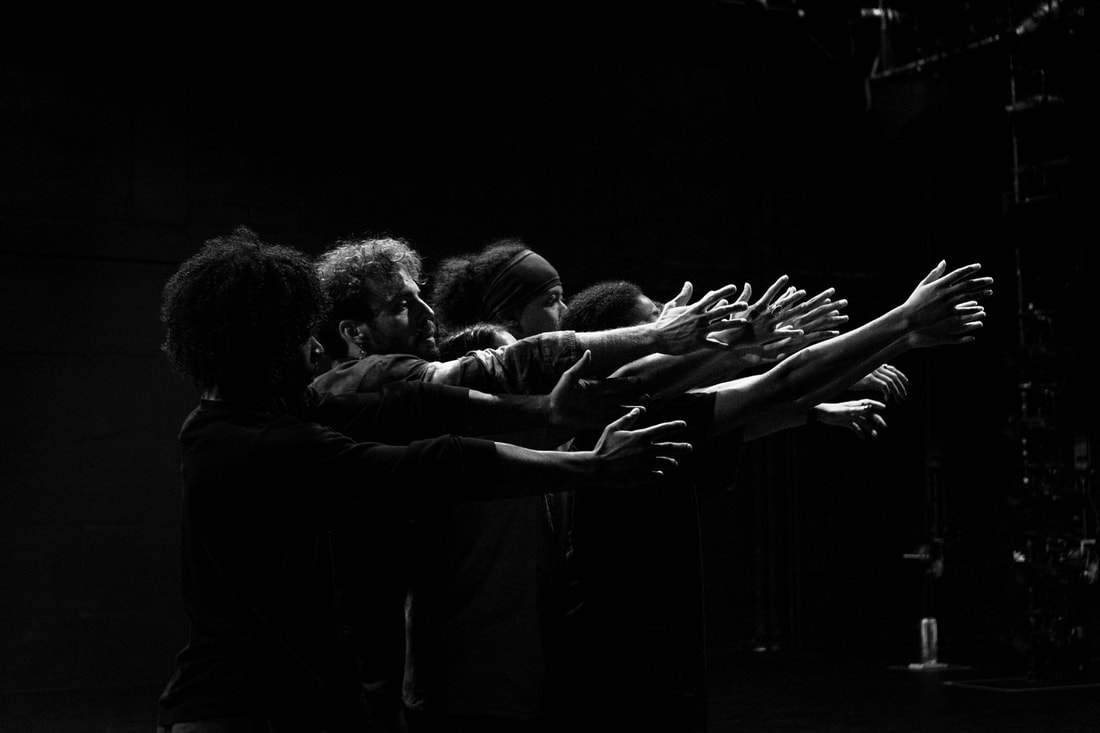
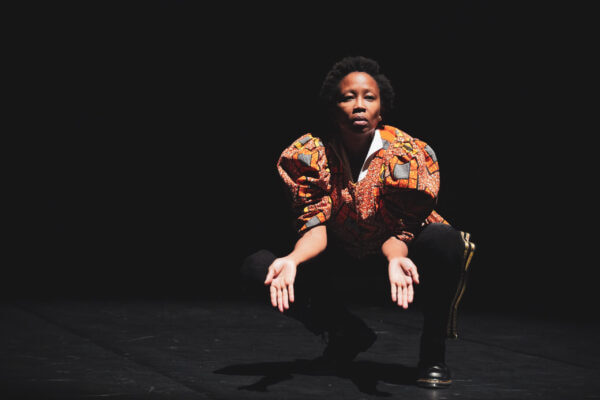
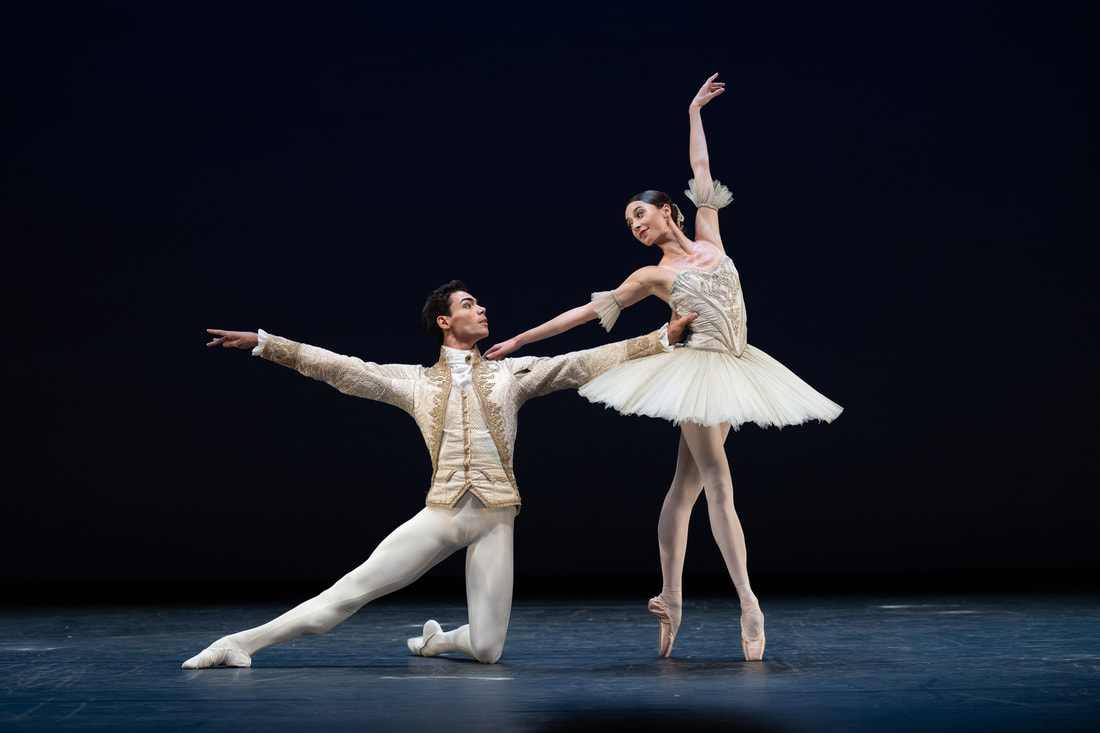
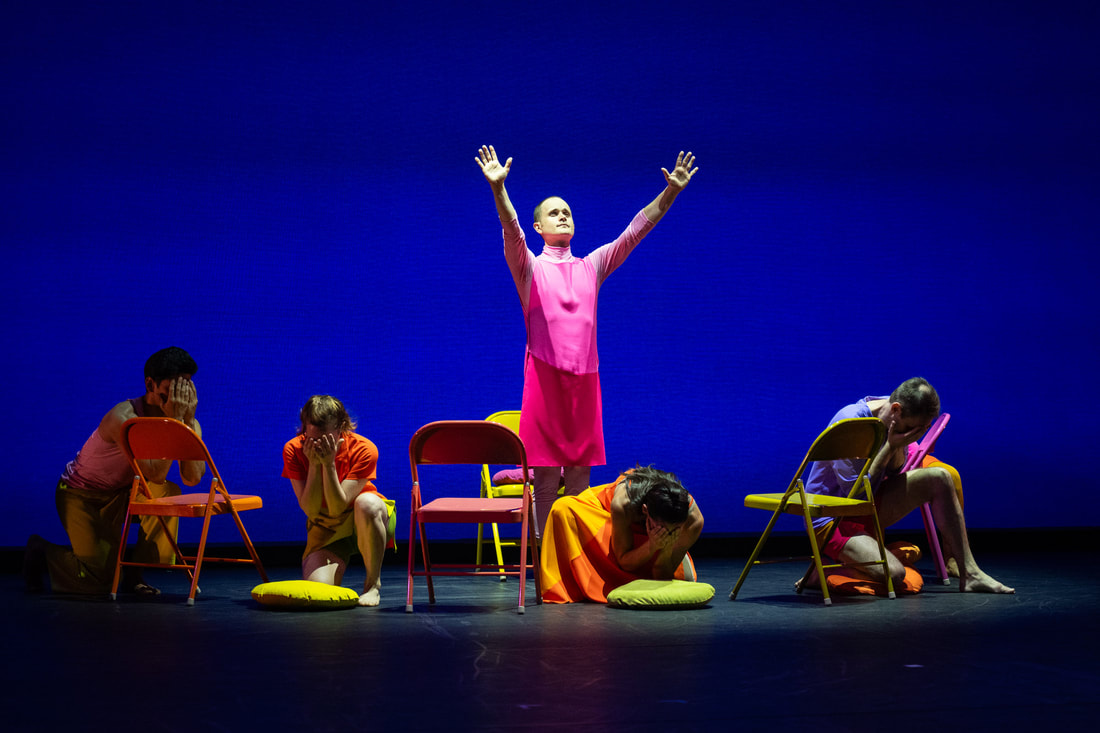
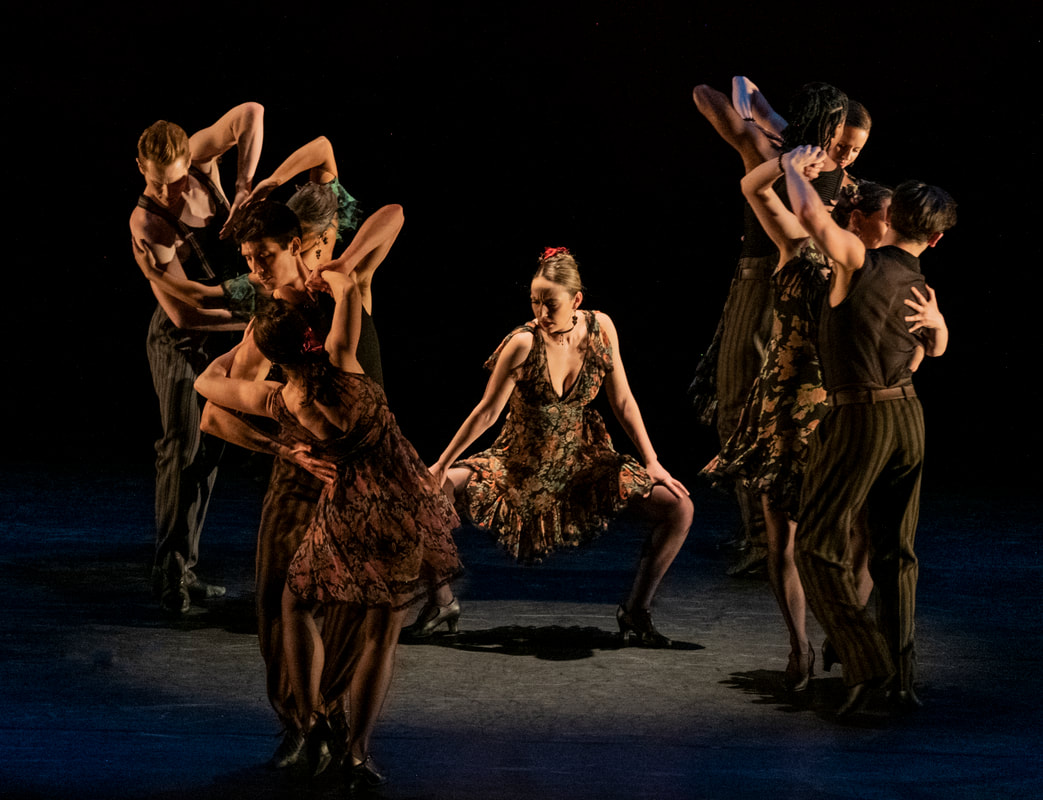
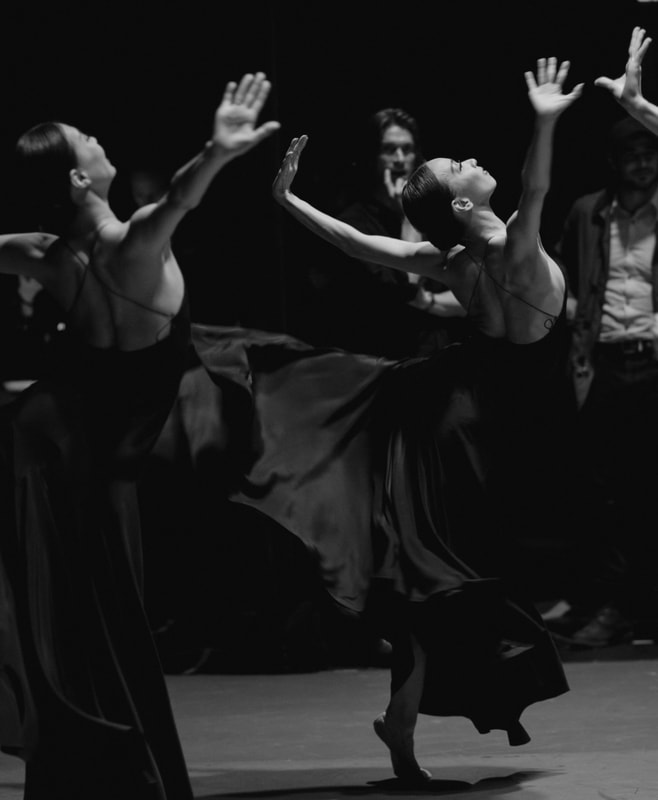
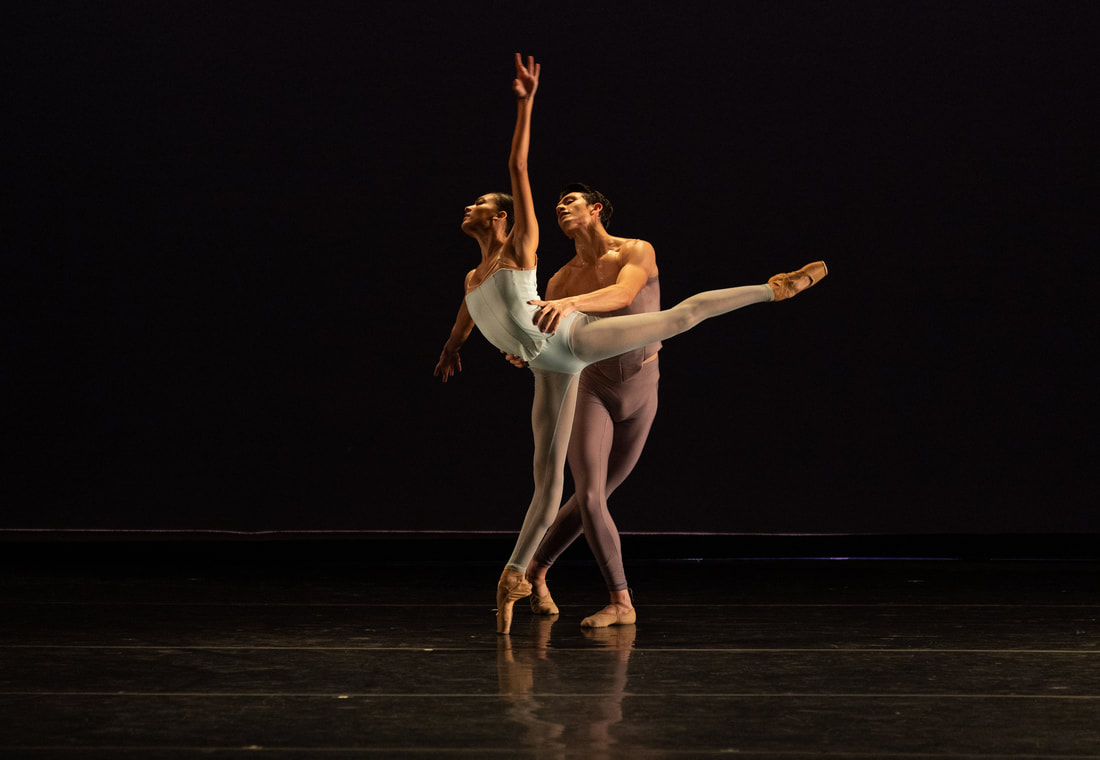
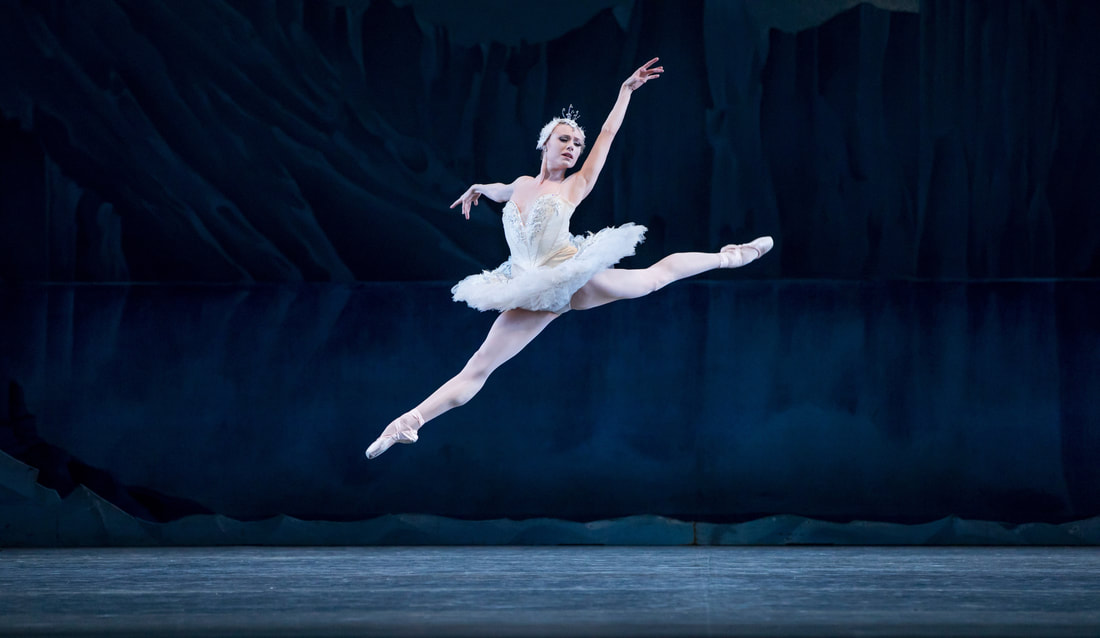
 RSS Feed
RSS Feed
